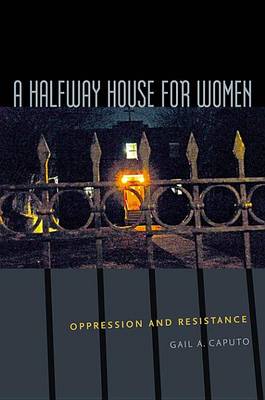Northeastern Series on Gender, Crime, and Law
2 total works
Although halfway houses have been touted for years as affirmative rehabilitation locations that ready women for life in the outside world, in this remarkable case study Gail Caputo shows how these places reinforce patterns of control and abuse that reaffirm the dependency and victimization of the inmates. Based on observations made while living and working alongside women at a halfway house within the prison system in a city in the Northeast, Caputo's analysis is anchored in the words and experiences of over a dozen women. Organized according to the progression of "levels" residents traverse during their time in the house, and the rules and behaviors associated with each level, Caputo offers a riveting look at what passes for "rehabilitation" and "reintegration" in such places, and delineates the many ways these women retain agency by resisting regulations designed to keep them in their place.
Based on interview material and life histories that create a vivid narrative, this remarkable volume is the culmination of three years of ethnographic research examining thirty-eight women with drug addictions in the Philadelphia area who took up criminal occupations of shoplifting and sex work. It provides in-depth criminological analysis of drug addiction and female criminality in addition to the sociology of crime work and occupations. Because most of the women interviewed are poor African-Americans raised and living in socially and economically disadvantaged neighborhoods, Caputo pays particular attention to gender, class, and other systems of status in the complex interactions between women's lives, drug addiction, and criminality. Out in the Storm reveals similarities and differences in pathways women take to drug addiction and particular crimes and illustrates how women manage both the business and risks of crime in urban drug cultures.
Caputo devotes careful attention to the technical and organizational aspects of shoplifting and sex work and is equally sensitive to nuance and difference among those she interviewed. While her subjects struggle to overcome much pain brought on by victimization and to live within social and economic constraints, Caputo illustrates how these women make crime work and demonstrates how they can - and do - make choices. With her analysis of shoplifting, Caputo provides rich, new insight into one of society's most compelling social problems and challenges the overly sexualized portrayal of women's crime. Unique in bringing together data on substance abuse, shoplifters, and sex workers, this volume will be an essential resource for scholars, activists, and practitioners with expertise or interest in criminological theory, urban poverty, women's studies, youth crime, the sociology of work and occupations, the sociology of education, and addiction.
Caputo devotes careful attention to the technical and organizational aspects of shoplifting and sex work and is equally sensitive to nuance and difference among those she interviewed. While her subjects struggle to overcome much pain brought on by victimization and to live within social and economic constraints, Caputo illustrates how these women make crime work and demonstrates how they can - and do - make choices. With her analysis of shoplifting, Caputo provides rich, new insight into one of society's most compelling social problems and challenges the overly sexualized portrayal of women's crime. Unique in bringing together data on substance abuse, shoplifters, and sex workers, this volume will be an essential resource for scholars, activists, and practitioners with expertise or interest in criminological theory, urban poverty, women's studies, youth crime, the sociology of work and occupations, the sociology of education, and addiction.

